One thing I’ve noticed across the years is that the better someone understands the basic science about a topic, the less likely they are to have pseudoscientific beliefs on it. It’s just like anything else, I suppose; your skill at the basic movements found in a sport is a good predictor of your overall ability in that sport. For nutrition, this means understanding biology in general, and in particular biochemistry.
Unfortunately, biochemistry is a notoriously hard subject—and perhaps due to this, nutrition is extremely prone to pseudoscientific wrangling and misinterpretation. It goes beyond the public, too; even registered dietitians, in my experience, are likely to offer at least a few unorthodox, unsubstantiated opinions masquerading as professional advice. Much of this bad advice could be countered with a better understanding of the underlying biochemistry, but then, most nutritionists are not also biochemists (this includes myself) and do not realize the basis of their error.
In this vein, I think the best answer to nutritional pseudoscience sometimes isn’t education in nutrition, but education in biochemistry; if you can lay out the scientific rationale for why something wouldn’t work on a basic, biological and biochemical level, it becomes more challenging to argue against. For example, with homeopathy (something of a punching bag here), the entire concept becomes ludicrous once you understand the basic chemistry of water—there’s simply no room in the chemistry of H2O to support the notion of “memory”, and if something like that were discovered, it would mean rewriting entire textbooks on elementary chemistry! Of course, explaining the basic science doesn’t mean you’ll always convince a person to give up a pseudoscientific belief, but you can at least lay bare the lack of science in their argument, and hopefully start paving the road towards future understanding (if done respectfully).
There’s the preamble; now for the article. I’ve written a few times about energy metabolism in a broad sense, but today I want to actually dive into the biochemical details. I want to do this because I think a firm understanding of the chemical basis of metabolism makes it possible to understand certain truths about nutrition and exercise, in particular as they related to fats and carbohydrates.
This will be a multi-part article. In this first part, I’m only going to go over the biochemistry of energy metabolism—how we fuel our muscles and how we regenerate that fuel. In subsequent articles, I’m going to discuss some interesting conclusions we can arrive at once we understand the biochemistry of energy metabolism. Those are the articles you’re probably more interested in, but as I stated, they rely on an understanding of what’s in this article, and so this article must be written first.
As a forewarning, the content of this article is complex. I have done everything I can to render it simply and eliminate the parts that aren’t explicitly relevant, but it’s still biochemistry, and it’s still abstract. If you don’t have the stamina to make it through, I understand—but I hope you’ll try!
What Is Energy?
In human biology, there is a single primary energy-containing molecule: adenosine triphosphate, or ATP. The molecule is formed of a single adenosine (a nucleotide) group with three phosphate groups attached. When our body breaks a phosphate off of ATP, the molecule moves from a state of higher energy to a state of lower energy, and the energetic difference is used to power nearly everything our body does.
When an ATP molecule is used (a reaction that requires water), it becomes ADP (adenosine diphosphate), which is the same as ATP but instead of having three phosphate groups it only has two. In addition, the phosphate group that gets broken off becomes a molecule of inorganic phosphate (Pi), and a hydrogen ion (also known as a proton, and denoted H+) is also released. In total, the equation looks like this:
ATP + H2O → ADP + Pi + H+ + energy
While ADP also contains energy, most of the time it does not get broken down further into AMP (adenosine monophosphate), but instead is rapidly regenerated into ATP. This is accomplished via our energy systems: the phosphagen system (creatine phosphate), anaerobic glycolysis, and aerobic metabolism. Furthermore, our body never uses the energy from these systems directly, but rather uses the energy solely to regenerate ADP to ATP! At all times, our body has a small store of ATP ready to power our muscles, and then turns different systems on or off to regenerate the spent ATP as needed.
Before we move onto these systems, I’d like to highlight one last thing about the above equation, which is the presence of inorganic phosphate and the hydrogen ion. Both have been tied to fatigue, a phenomenon that is surprisingly not well-understood even today, and it’s clear that the higher the intramuscular levels of either the more likely an athlete is to succumb to fatigue.
It should also be noted that the hydrogen ion (H+) is the chemical basis of acidity—the higher the ratio of H+ to OH– (hydroxide) in a liquid, the more acidic the liquid (H+ and OH– molecules pair up to form H2O—water). Thus, as H+ levels increase in our muscles, so does intramuscular acidity.
Now, let’s move onto the systems themselves!
The Phosphagen System (AKA the Creatine Phosphate System)
The phosphagen system is our first and fastest source of energy. It consists of creatine phosphate, which (as the name implies) is a molecule of creatine with an attached phosphate group. Just like with ATP, when the phosphate group is broken off, energy is released—and this energy is used to regenerate ADP to ATP.
The advantage of the phosphagen system is that it’s very fast—it can regenerate ATP twice as fast as the next closest system (anaerobic glycolysis), and over eight times faster than the slowest system (fat oxidation). It’s the first system our body turns to when it needs to regenerate ATP. It’s also the smallest energy pool we have, and can only sustain intense exercise for around 5-10 seconds. After this, other systems must be called upon as well.
The reaction for the phosphagen system looks like this:
Creatine phosphate + H+ + ADP → Creatine + ATP
Technically, breaking creatine phosphate down into creatine also releases a molecule of inorganic phosphate as well, but since the molecule of ADP absorbs an inorganic phosphate, I don’t include it in the equation. Nevertheless, the breakdown of creatine phosphate to creatine is a source of inorganic phosphate accumulation over time since the breakdown of ATP to ADP also releases an inorganic phosphate ion, and thus for every ATP broken down and subsequently regenerated, and total of two inorganic phosphates are released while only one is resorbed.
On the other hand, the breakdown of creatine phosphate doesn’t release an extra hydrogen ion, and so creatine actually buffers against intramuscular acidity by providing a sink for those extra hydrogen ions. In this way, creatine fights (or at least buffers against) intramuscular acidosis.
Of course, the moment that ATP molecule is regenerated, it’ll be broken back down into ADP—we regenerated ADP to ATP precisely because we need energy! Our body will continue to use the phosphagen system for as long as it can, but eventually creatine phosphate dwindles and we must turn to other sources. Next in line is glucose.
Anaerobic Glycolysis and Lactate Production
Glucose is not as fast or as efficient as creatine phosphate, but it’s advantage is that we can store far greater quantities of it. Time-wise, we can sustain exercise via glucose (in the form of muscle glycogen) for another minute or so when anaerobically metabolized (e.g., during intense exercise), and potentially for hours (depending on your level of aerobic fitness and size of your glycogen store) when oxidized aerobically.
The metabolism of glucose is much more complicated than creatine’s because it must undergo several structural changes. While creatine phosphate is simply broken down into its two constituent parts—creatine and phosphate—we must initially turn glucose, a six-carbon molecule, into three-carbon pyruvate. This a multi-step process that requires a small input of energy to begin, but ultimately yields more energy.
All glucose metabolism begins with the conversion of a single glucose to two pyruvates (anaerobic glycolysis). In the process, four ATP and two NADH are created (but two ATP are also spent, so total net ATP gain is only two). When oxygen is available, each NADH can be used to regenerate another two or three ATP depending on the mechanism used to transfer it into the mitochondria—the exact number isn’t terribly important, and it’s all abstract anyway as we’re dealing in vast numbers of molecules at any given moment, not just a single glucose. When oxygen is unavailable, that NADH can’t do anything.
Overall, the equation for anaerobic glycolysis looks like this:
Glucose + 2ATP + 4ADP + 2Pi + 2NAD+ → 2 Pyruvate + 4ATP + 2NADH + 2H+ + 2H2O
Or, if you want to simplify it:
Glucose + 2ADP + 2Pi + 2NAD+ → 2 Pyruvate + 2ATP + 2NADH + 2H+ + 2H2O
From here, the metabolism of glucose divides. If there is oxygen available, we further convert the pyruvate to a molecule called acetyl CoA that we then run through the citric acid cycle—more on this in the next section. If there isn’t oxygen available, we reduce the pyruvate to lactate.
Contrary to popular belief, lactate is neither the same as lactic acid nor does it contribute to intramuscular acidity (a potential cause for the pain experienced during the pump). Rather, lactate actually absorbs H+ ions, thereby acting as a sink for H+ and helping to prevent an increase in intramuscular acidity.
Take a look at the equation:
2 Pyruvate + 2NADH + 2H+ → 2 Lactate + 2NAD+
As you can see, the production of lactate from pyruvate both absorbs an H+ ion as well as regenerates one NADH to NAD+, which is important because our cells have a limited supply of NAD+ and without it we cannot convert glucose to pyruvate. (We can also regenerate NAD+ by aerobically extracting the energy from NADH, but since that requires oxygen it’s not an option here). From here, the lactate can be transported out of the cell, effectively removing an H+ for every lactate removed. Lactate removed in this way is sent to the liver to be regenerated back into glucose that can then be re-used, so no energy is lost.
If we consider the totality of the sequence from glucose to lactate, we end up with the following:
Glucose + 2Pi + 2ADP → 2 Lactate + 2ATP + 2H2O
Two ATP isn’t much, especially compared to what we can yield from glucose or fat when there is oxygen available, but it’s better than nothing, and it’s all we can actually get without oxygen. Since anaerobic exercise is defined as exercise without sufficient oxygen, this makes anaerobic glycolysis an extremely important source of energy for anaerobic exercise such as climbing!
Aerobic Oxidation of Carbohydrates
When we don’t have enough oxygen to aerobically metabolize carbohydrates, we must make do with the small anaerobic yield. Whatever oxygen we do have available, however, will be used to process carbohydrates (and fats) through the citric acid cycle and extract their energy using the electron transport chain. This yields vastly more energy than simple anaerobic glycolysis—but it does require oxygen, and so it’s not always possible, or at the very least it is limited during anaerobic exercise.
For each pair of pyruvates converted to acetyle CoA and run through the citric acid cycle, we generate approximately another 25-29 ATP. We also derive 3-5 ATP from the NADH generated from the initial breakdown of glucose to pyruvate (remember that?). When this ATP is combined with the 4 ATP we generated during the anaerobic portion of glycolysis (and subtracting out the 2 ATP investment), we end up with a net total gain of 30-36 ATP per molecule of glucose, which beats the pants off the yield solely from anaerobic glycolysis. Furthermore, every ATP regenerated using the citric acid cycle rids our cell of one H+ ion and one inorganic phosphate—fantastic!
Assuming perfect efficiency* for the aerobic oxidation of glucose, our equation looks like this:
Glucose + 38ADP + 38Pi + 38H+ + 6O2 → 38ATP + 6CO2 + 44H2O
*We never really achieve perfect efficiency; there’s always some leakage that reduces the total ATP generated. Regardless, it yields a lot more ATP than the anaerobic portion of glycolysis.
It should also be noted that it takes much more time to yield ATP from the aerobic oxidation of glucose than from the anaerobic portion, even on a per-ATP basis (it’s about half as fast); all the reactions of the citric acid cycle and electron transport chain take time. Thus, aerobic oxidation is not only oxygen-dependent, it’s also time-dependent.
Aerobic Oxidation of Fat
Just like carbohydrates, fat is metabolized aerobically for energy using the citric acid cycle and electron transport chain. Unlike carbohydrates, however, fat cannot ever be anaerobically processed; it is an aerobic-only molecule.
The exact metabolism of a fatty acid will vary slightly depending on the type of fat and the length of its “tail” (which can vary from only two carbons long to over twenty), but I’ll use a simple (and common) saturated fat as our example—palmitic acid, a 16-carbon long fatty acid. As with carbohydrates, the first step is converting the fat into molecules of acetyl Coa, which for fats is done using beta oxidation (which is rather lengthier than converting pyruvate to acetyl CoA). From there, the acetyl CoA is processed through the citric acid cycle. In the case of palmitic acid, the ultimate yield is approximately 129 ATP: 131 ATP minus a 2 ATP “activation cost”.
The equation is as follows:
Palmitic Acid + 131ADP + 131Pi + 131H+ + 23O2 → 131ATP + 16CO2 + 23H2O
Fats of other lengths and types will yield greater or lesser amounts of ATP depending on how many pairs of carbons they have, but ultimately will yield about the same overall energy per carbon pair: approximately 18.5 ATP. Unfortunately, since the metabolism of fat is so much more complicated than the metabolism of carbohydrates—even aerobically—it is even slower, and can only regenerate approximately half as much ATP as aerobic carbohydrate oxidation.
Next: Interesting Observations About Energy Metabolism
As I warned before we began, there’s nothing particularly easy to understand about energy metabolism, but I hope I helped you understand the basic process by which our muscles (and everything else) is fueled—the breakdown of ATP into ADP—and how we subsequently regenerate that spent ATP using anaerobic and aerobic energy systems. This will be the basis for what I talk about in the next segment.
Right now, it’s all pretty abstract—but that’s probably unavoidable when we’re talking about an invisible cellular energy currency! If there’s one thing you gain from this article, it’s that anaerobic energy systems are fast but low yield (1-2 ATP per molecule) while aerobic energy systems are slow but high yield (30+ ATP per molecule, or 15-20 ATP per carbon pair). Everything else is just details.
At any rate, you now at least have an easy reference, which I’m sure will come in handy in the next article on this topic. Until then!


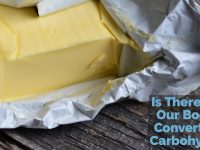
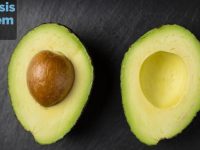
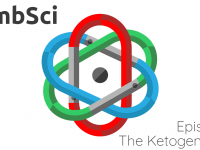
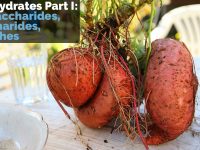
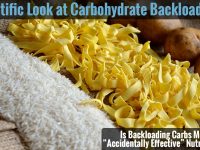
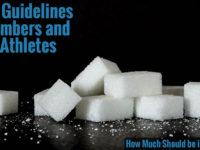
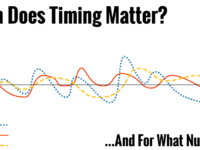






I think you do a disservice to the general public in your description of Registered Dietitians. We are educated in Nutritional Biochemistry, but well before we can sit in that class, much lengthy studying including bio chem, organic chem, biology, microbiology, statistics, research, expository writing for the sciences, multiple food science classes, and labs with most of those, are needed to be completed and passed. The degree is pre med and biochemistry based. Many individuals look at the full degree and opt for kinesiology or nursing because of the level of difficulty. Some get through the coursework and can’t pass the licensing exam. Then the Advanced Practice certification licensing test can be done and/or one of the specialties like Oncology, Renal, Geriatrics, Sports Nutrition, or Diabetic Education. The levels of BS, MS, and PhD are possible, and every 5 years a required 75 units of CE is required to keep the certification active. Take a look at a university catalog for the basic BS in Nutrition. We do know just a bit about Nutritional Biochemistry; unless you are talking about those online “nutritionists”. That is not a degree, it is a scam certification and is not recognized by The Medical Community, the Commission on Dietetics Registry, or the Academy of Nutrition and Dietetics. Only Registered Dietitians can claim the true title of Nutritionist and are the only ones that can be legally hired to practice in a clinical or government position. cdrnet.org and eatright.org will give anyone interested all of the information I have cited.
I’m sorry, I didn’t mean to offend or suggest that every RDN holds unscientific beliefs. I have no doubt that the majority do not, but alas it is not the majority who write online but rather a few. And I don’t mean to single out dietitians, either—there are plenty of MDs, DOs, PhDs, and the ilk who also peddle unscientific concepts but use their credentials as a ballast against criticism! I suppose my broader point is merely that holding a credential does not in itself promise scientifically rigorous writing, and that all claims should be backed by evidence or clearly demarcated as an opinion. Thanks for the comment!